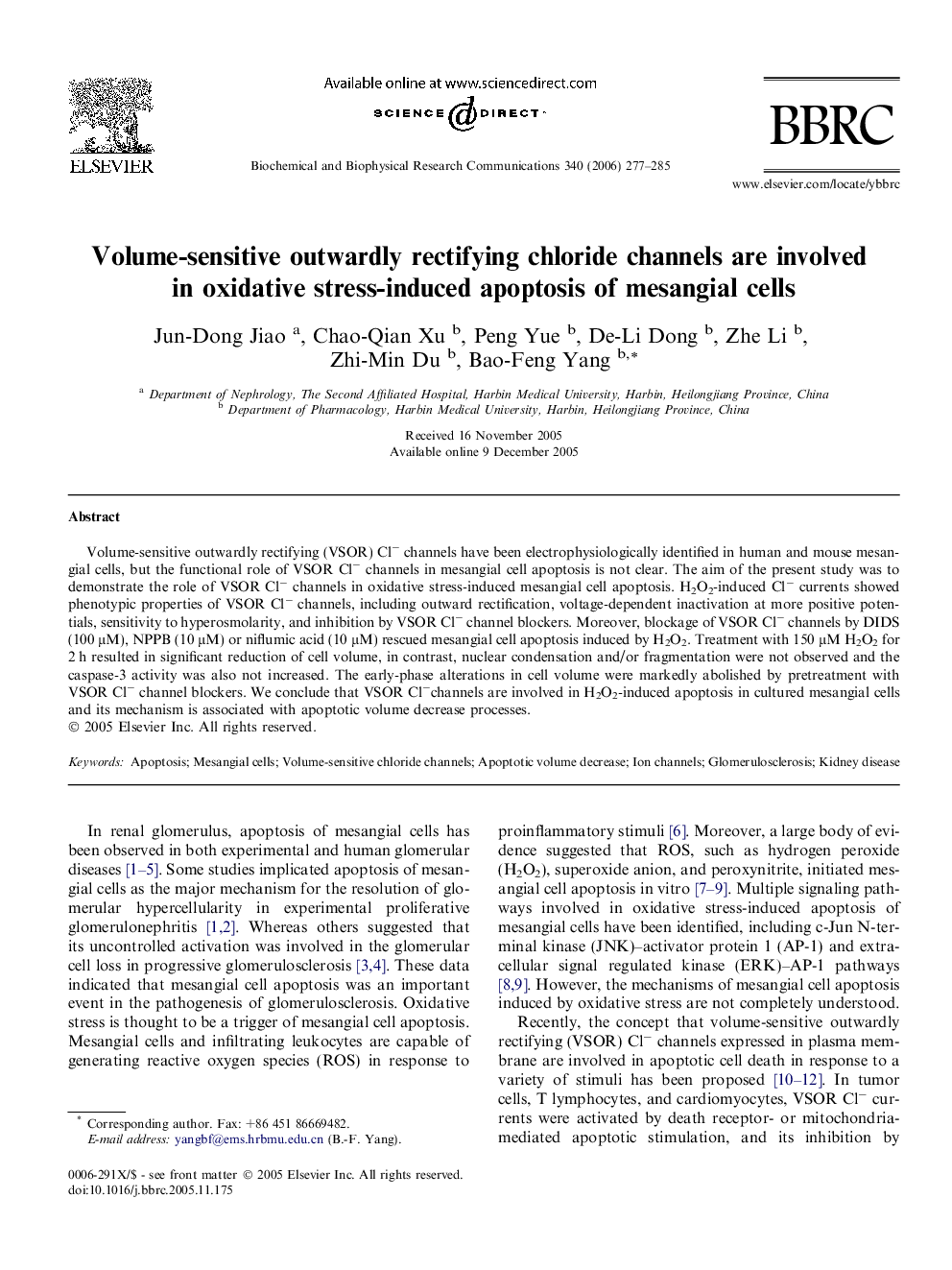| Article ID | Journal | Published Year | Pages | File Type |
|---|---|---|---|---|
| 1940705 | Biochemical and Biophysical Research Communications | 2006 | 9 Pages |
Volume-sensitive outwardly rectifying (VSOR) Cl− channels have been electrophysiologically identified in human and mouse mesangial cells, but the functional role of VSOR Cl− channels in mesangial cell apoptosis is not clear. The aim of the present study was to demonstrate the role of VSOR Cl− channels in oxidative stress-induced mesangial cell apoptosis. H2O2-induced Cl− currents showed phenotypic properties of VSOR Cl− channels, including outward rectification, voltage-dependent inactivation at more positive potentials, sensitivity to hyperosmolarity, and inhibition by VSOR Cl− channel blockers. Moreover, blockage of VSOR Cl− channels by DIDS (100 μM), NPPB (10 μM) or niflumic acid (10 μM) rescued mesangial cell apoptosis induced by H2O2. Treatment with 150 μM H2O2 for 2 h resulted in significant reduction of cell volume, in contrast, nuclear condensation and/or fragmentation were not observed and the caspase-3 activity was also not increased. The early-phase alterations in cell volume were markedly abolished by pretreatment with VSOR Cl− channel blockers. We conclude that VSOR Cl−channels are involved in H2O2-induced apoptosis in cultured mesangial cells and its mechanism is associated with apoptotic volume decrease processes.
